Media | Articles
3 Oldsmobiles from the brand’s youthful, exuberant heyday
You probably remember the “Not your father’s Oldsmobile” ads that debuted in 1988 in an attempt to promote the company’s updated front-wheel drive lineup and turn around a precipitous drop in sales. Even as a school-age kid, those 30-second spots fell flat for me. I understood that the sleek new W-body Cutlass was more advanced than my grandma’s late ’70s rusty brown car of the same name, but not my father’s Oldsmobile? Yes, these new cars were the antithesis of muscle, but the ground-pounding 4-4-2s and the occasional Hurst/Olds my dad would go out of his way to steer me toward at car shows were glorious. Why would a company would want to distance themselves from that? If anything, those cars were peak Oldsmobile.
Decades later, we know how well those ads worked. Olds is gone, and for many younger buyers, the name might as well be Studebaker or even Mercer—they just don’t see many classic Oldsmobiles, so it would be easy to consider the brand a dusty relic without fun or interesting models to enjoy.
This is, of course, quite wrong. Oldsmobile’s effort in the muscle car era yielded several eye-catching and entertaining alternatives to the Chevy/Ford/Dodge contingent, and they stand out even today.
1969 Hurst/Olds
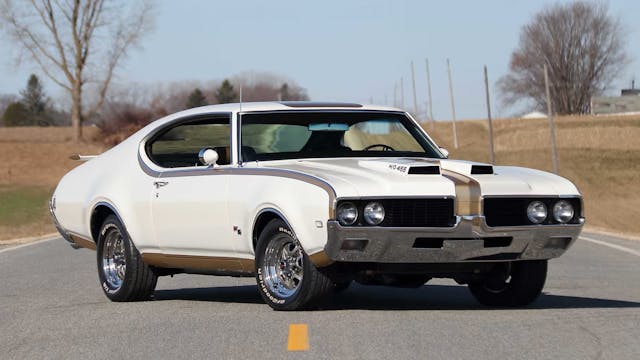
Sixties muscle car lore has no shortage of end-around stories—processes that enabled some truly fast and fun cars to come to life despite corporate edicts and other efforts to stymie the horsepower wars. Chevy’s COPO cars are perhaps the most notorious, but the Hurst/Olds deserves a special mention.
George Hurst had an idea. An inveterate hot rodder and creator of the shifter that bore his name, Hurst had established a strong relationship with GM in the early ’60s. In 1967, he approached Pontiac with a plan to get around the corporate ban on engine sizes of greater than 400 cubic inches in mid-size and smaller platforms: Hurst would install the Poncho 428-cubic inch V-8 into completed Firebirds and Pontiac would sell them at their dealerships. While conversations did make it up the ladder with some enthusiasm, the Pontiac deal fell short. Instead, Hurst was pointed to another GM brand that might have interest: Oldsmobile.
This time, the effort gained traction. Oldsmobile dearly wanted to update its image and drive sales of their 4-4-2, which was capable on the street but paled in comparison to Pontiac’s GTO on the sales charts. A Hurst/Olds halo car, with its engine bay filled with the new Oldsmobile 455-cubic inch V-8 while all the other mid-sized cars had to make do with GM’s 400-cube limit, appealed to Oldsmobile chief engineer John Beltz. Ultimately, even with the edict in place, the bigger engines were installed by Oldsmobile itself before the cars were delivered to Hurst for further modification.

The Hurst/Olds debuted in 1968, but the 1969 model is more broadly remembered thanks to its more overt Firefrost Gold over Cameo white paint scheme and mailbox hood scoops wearing “H/O 455” in large gold lettering.
At 380 horsepower and an even 500 lb-ft of torque, the 455 in the ’69 Hurst/Olds didn’t disappoint, though it had 10 hp less than the non-AC models from 1968. Zero-to-60 took a brisk 6 seconds and the quarter mile went by in 14—not the top of the muscle car heap, but still plenty quick. The only option for shifting was the TH-400 three-speed automatic topped with, you guessed it, a Hurst shifter that had the standard pattern along with another gate that enabled shifting through the forward gears without the possibility of engaging park or reverse.
In addition to the engine, hood scoop, shifter, and hallmark color scheme, a large rear wing, special door mirrors, grey 15×7-inch wheels, Hurst/Olds emblems, and a registration dash plaque (provided when the original buyers sent in their information) completed the package. According to the Hurst/Olds Club of America, 906 ’69 Hurst/Olds were made, all of which were coupes except for three convertibles used by Hurst for promotional activity (other sources put that number at two).
Unlike many muscle cars, the Hurst/Olds did not see a value bump during the pandemic. It did, however, begin to see its values drop as the market began to cool in 2022. A #2 excellent condition car is valued at $63,500, while a #3 car comes in at $46,600, which sounds affordable compared with other rare muscle with similarly interesting history. Hagerty Price Guide editor Greg Ingold elaborates:
“The main downside is that they’re all equipped with automatics, which might be a detractor to non-Oldsmobile enthusiasts. Couple that with the fact that when Hurst/Olds come up for sale, they’re not often in show condition—a lot are driver-quality cars. That may drag the average down somewhat.”
1970 4-4-2 W-30
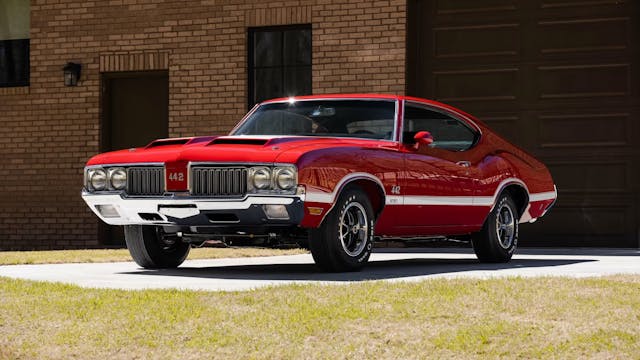
What a difference a year makes. The brass at GM finally decided to lift its engine displacement limitations for the 1970 model year, and suddenly Olds didn’t need the Hurst side door operation to fit the 455 into its A-body muscle car—it was now standard in the 4-4-2. As a result, the Hurst/Olds was shelved and the 4-4-2 with the W-30 package became the top dog with a healthy 370 horses and 500 lb-ft of torque, just shy of the the Hurst/Olds’ 380. Hurst wasn’t completely missing from the picture—buyers who opted for the TH 400 automatic got the dual-gate shifter (a heavy duty four-speed manual was also available).
The W-30 package consisted of quite a few engine tweaks given the five-horse advantage it held over the base 455—different heads, an aluminum intake manifold, and a unique camshaft were the primary changes. Though these engines didn’t wind out the tach, torque is the Olds 455’s calling card, and it had plenty of it.
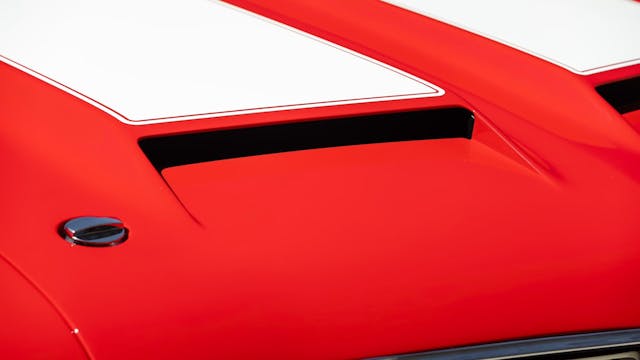
Other elements of the package include a dual-scoop fiberglass hood that leads air to a vacuum-actuated opening to the air cleaner, front disc brakes, and its handsome appearance elements. Though a cheaper car than the Hurst/Olds when new, the W-30 only fared nominally better than the Hurst/Olds in the sales department. 3100 ’70 W-30s were sold across three body styles, with only 264 convertibles produced.
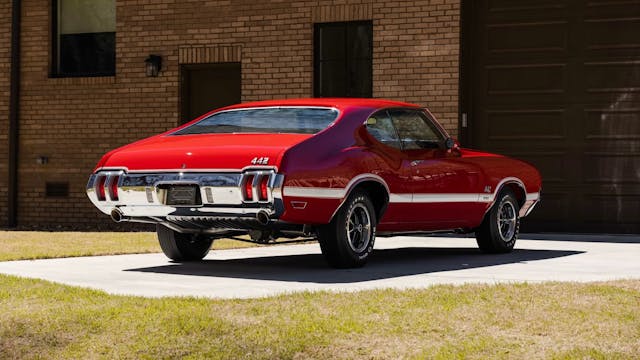
Today, despite the greater number of cars, lower horsepower rating, and less tantalizing backstory, the ’70 W-30 holds a commanding value advantage over the Hurst/Olds—#2 W-30s are almost 40 grand more expensive at $103,000, and good-condition driver values are just under $75,000. The W-30 enjoyed a dramatic bump during the pandemic, with #2 values cresting $130,000 in July of 2022 before settling just above pre-pandemic values in the last Price Guide.
1970 Cutlass Rallye 350
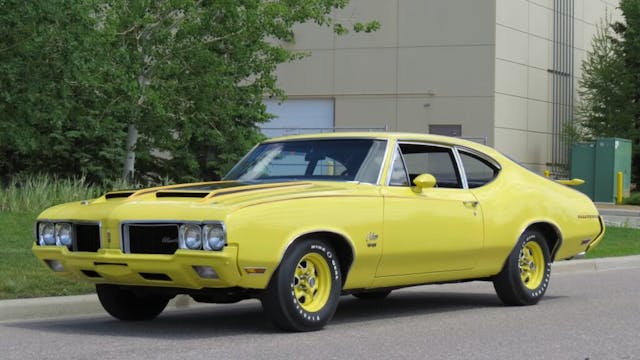
An outgrowth of the Hurst program though it was built in-house, the Cutlass Rallye 350 offered all the show (and then some) along with a portion of the go of its more muscular siblings. Debuting in 1970 and lasting only that model year, it’s not an overstatement to say that the Rallye 350 is one of most visually distinctive Oldsmobiles ever produced.
Even for the rainbow-hued colorful peak of the muscle car era, the Cutlass Rallye 350 wore a lot of yellow. The bumpers, typically chrome-plated, were instead urethane-coated and slathered in the same Sebring Yellow as the body, and the wheels eschewed the usual chrome trim rings for full effect. Shiny bits trimmed the glass and grille, and strokes of black decals along its flanks and hood scoops added definition to the car’s lines—those are the only concessions to the car’s otherwise completely sunny disposition.
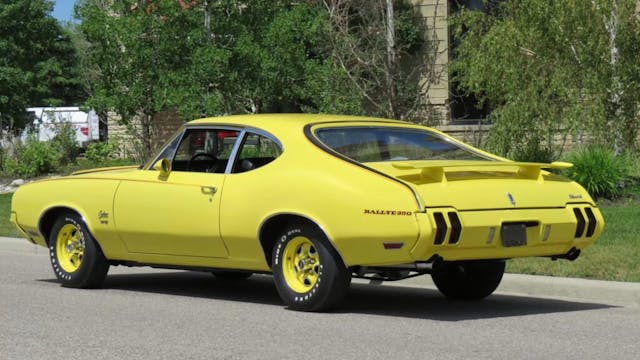
As attention-getting as its exterior was, the Rallye 350 wasn’t going to win many races, but it wasn’t a boat anchor, either. At 310 hp and 390 lb-ft of torque, the 350-cubic inch L74 engine was powerful enough to ensure that buyers wouldn’t be embarrassed on the street while also avoiding big-block-level insurance premiums. Transmission options included three- and four-speed manuals as well as the Turbo Hydra-Matic 350 three-speed automatic, and the differential had optional “Anti-Spin,” Olds’ term for limited slip, and 3.23-, 3.42-, or 3.91:1 gear sets. Optimally set up, the Rallye 350 would find 60 in seven seconds and run the quarter in the low 15-second range.
Whether buyers weren’t sure what to do with such a flashy car from a typically staid company, or there was a lack of understanding of how to promote this mid-range muscle car, the Rallye 350 didn’t fare well on the sales floor—only 3547 units were produced. Modern buyers can expect to pay about 50 grand for an excellent example, while a good driver can be had for under $35,000. The Rallye 350 saw a significant bump in value in 2021 and has remained stable since then.
It turns out that I may not have been the only one who had a family member who shared with them how cool these cars could be. Millennials are showing interest in their father’s (or is it their grandfather’s?) Oldsmobiles, with a significant 22 percent share among Cutlass buyer (the Rallye 350 is categorized with the Cutlass). That their portion of 4-4-2 ownership is slightly less makes sense given that car’s higher values. Gen X represents about a third of Cutlass and 4-4-2 buyers, while boomers continue to hold strong in both. Though values are flat for the Rallye 350 and trending down for the Hurst/Olds and ’70 W-30, interest among younger buyers appears to be significant enough to suggest that Olds muscle will continue to remain a popular, if slightly niche, alternative option in the segment.
Oldsmobile struggled with its image, on and off, for decades. From performance V-8 trailblazer in the ’50s, to a reputation as an old person’s car in the ’60s before these A-body muscle cars arrived, to a sales leader, to an old person’s car yet again before its death as a brand in 2004, the company nonetheless did have some great and characterful efforts. The Hurst/Olds, W-30, and Rallye 350 represented a shining moment for the brand. Which of these three would you pick?
***
Marketplace
Buy and sell classics with confidence
Check out the Hagerty Media homepage so you don’t miss a single story, or better yet, bookmark it. To get our best stories delivered right to your inbox, subscribe to our newsletters.
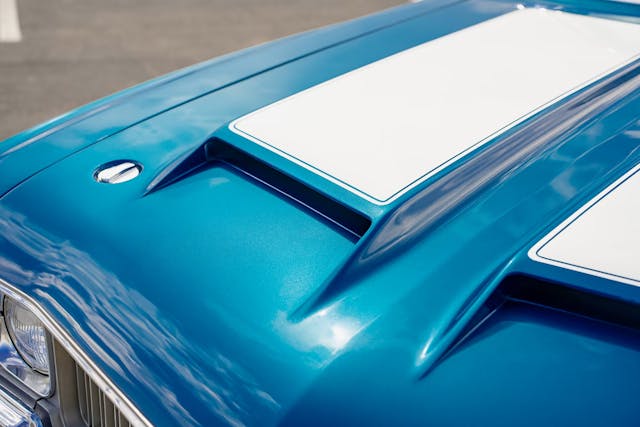

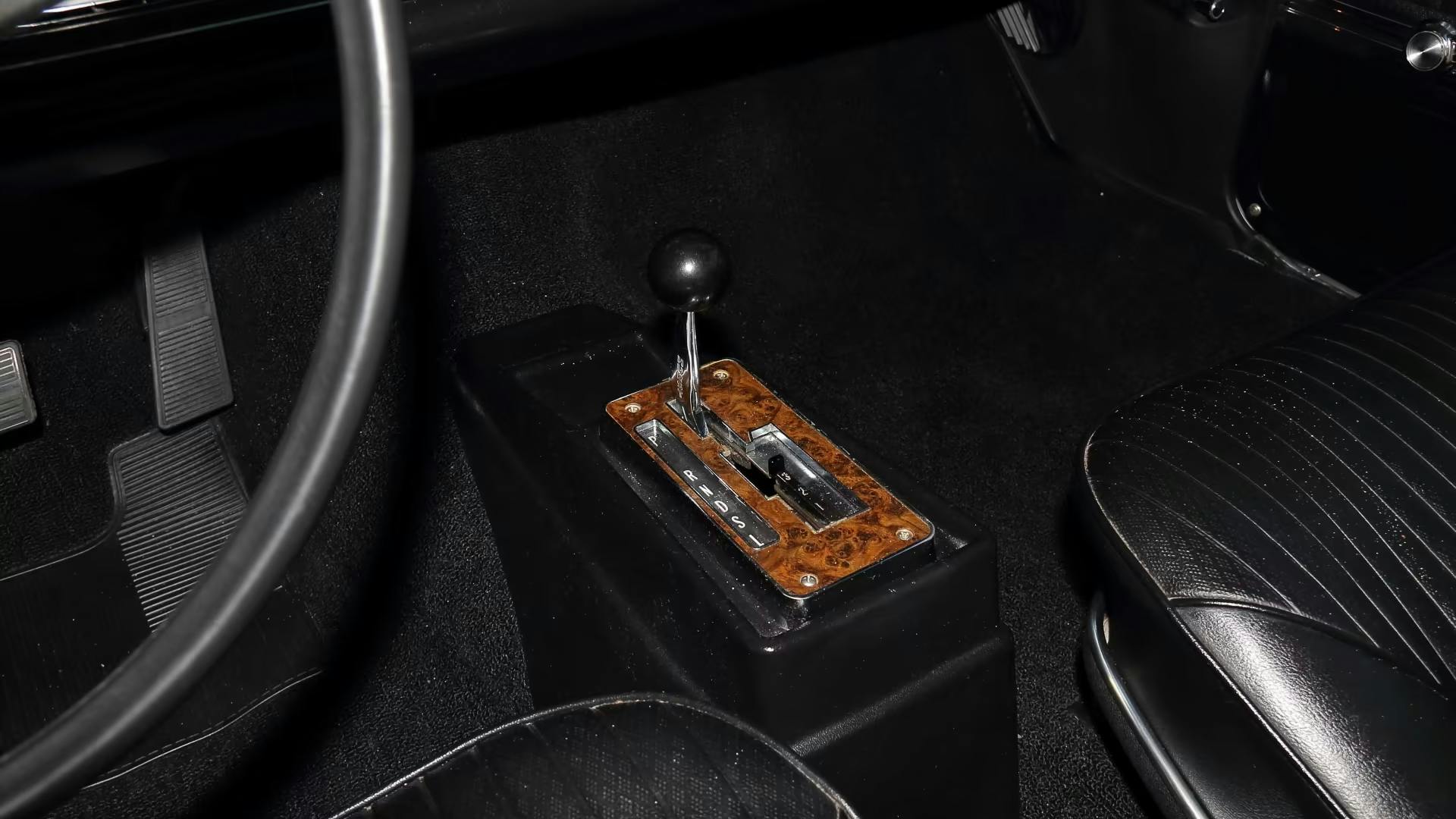
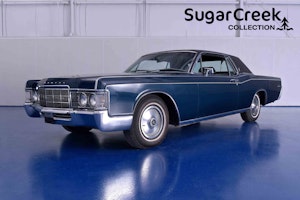
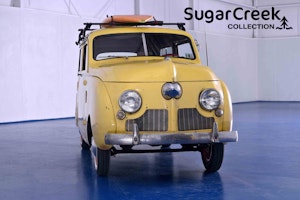

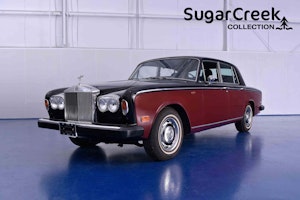
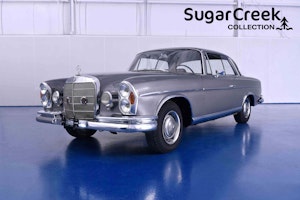
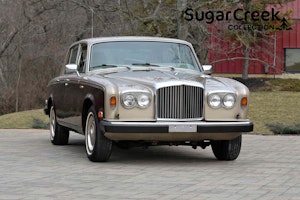
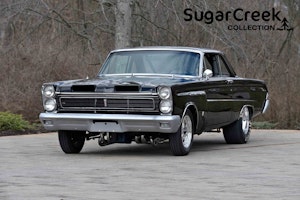







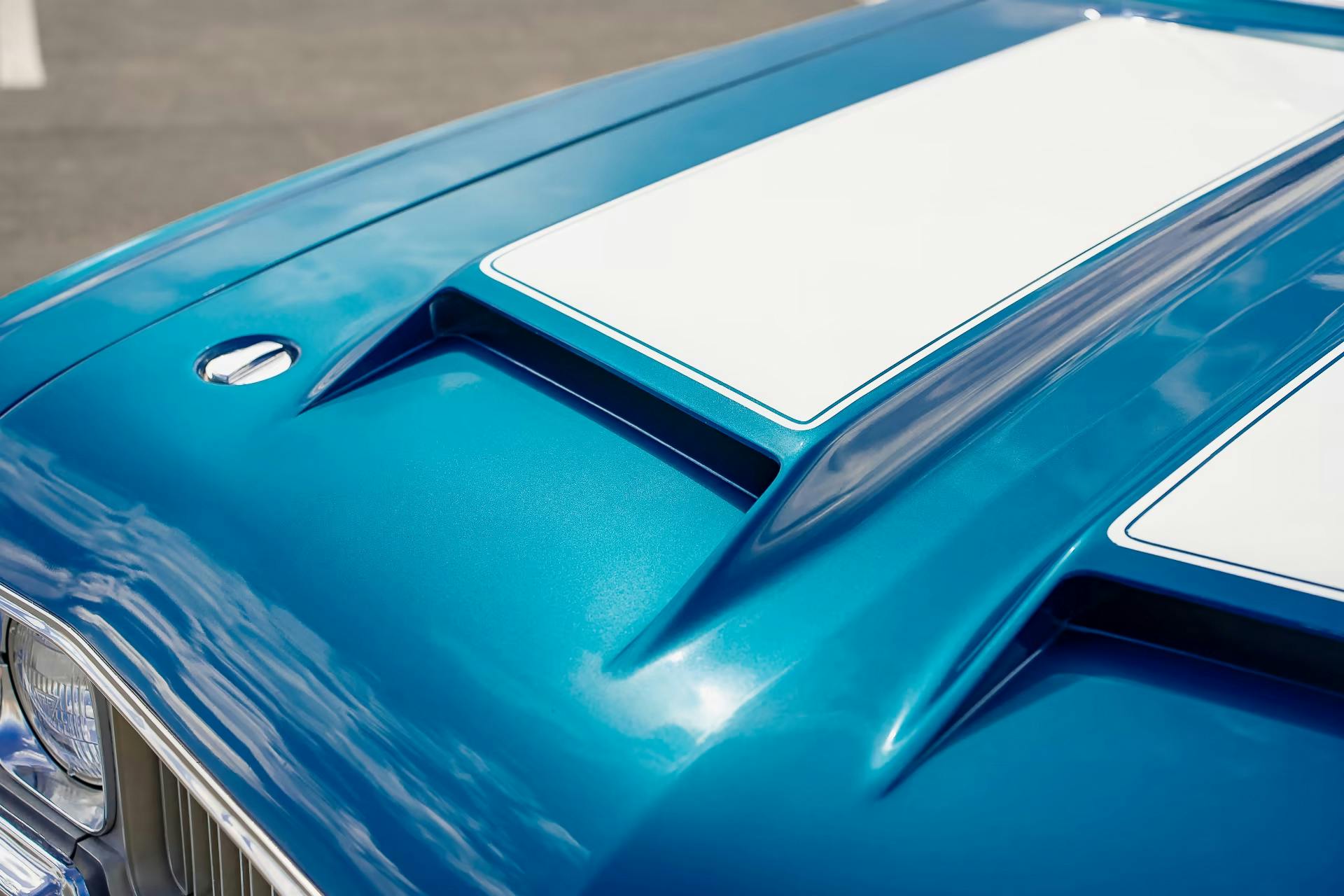
I grew up in an Oldsmobile family –
‘56 Olds 88 324 4bbl
‘60 Olds 88 394 4bbl
‘63 Olds F85 215 4bbl
‘66 Olds Toronado
The Toronado was bought from Brainbeau Olds in Braintree MA, who sponsored the W30 442 that won the 1966 NHRA B/Stock national championship. I still remember watching the team working on that 442 in the shop when we would bring the Toronado in for service.
Another memory – grease packing those HUGE Rzeppa front wheel needle bearings on the Toronado (66 only IIRC)
My father loved that Toronado – kept it for nearly 50 years.
B
I owned a 1970 W31 back in the early ’70’s. It was essentially a W30 but with a 325 horse 350 instead of the big block. Had the fiberglass hood with real scoops and the rear wing, posi-track and heavy duty auto that would chirp ’em in second gear. No one seems to remember them–I belive they only made around 1300 cars. It was a much better balanced car than the big block–but then my previous car was a TR4.
Dr. Oldsmobile and his hunchback friend ( Harry ? ) would be proud. W-30….for life.
Loved those 442’s back in the day but couldn’t afford one, bought a used ‘69 Cutlass Supreme, fun car.
In my later years bought a semi-restored ‘70 Cutlass SX convertible. You don’t hear much about these cars but some referred to them as a “442 incognito”.
Would have been nice to see this story include this car.
George Hurst was a genius
One Olds 442 rarely mentioned was the 1970 Vista Cruiser station wagon! Two are claimed to have left the factory with the W-30 option.
In the 80’s I built a “daily driver” 1969 442 Vista Cruiser. I liked the dash board better than the chrome laden 1970 version. I found two 1969 Vista Cruisers. One was a worn out, but rust free desert car. The other was a local car left out and suffered from rust around the roof glass. Then parts were available at the salvage yards. I installed bucket seats up front to replace the bench. Center console was installed. 442 gauges including the “Tik Tok tach”. One of the cars I bought had a recently rebuilt turbo hydramatic 400. Both had 400 engines, but I located a 455 block and had that built up. The wheels were replaced with the optional 15″ 442 Olds Ralley wheels. I installed a 1969 a bigger GTO front sway bar and the rear axle boxed trailing arms with sway bar from a 1969 SS Chevelle. The spring rates were stock. One of the best handling and riding big cars I ever owned. The 455 engine pulled like a locomotive all the way to redline and contrary to this articles comment, it revved higher before up shifting than the Chevy 454! To this day it is the only car I built that I regret selling.
Went to College with a guy whose Dad was an Olds dealer. He got a new 442 convertible every year. The car was always the same. A 442 convertible, red with white top and white bucket seats and dash, black carpet. His cars always were automatics but were always column shift. Other than that they were loaded.
I owned a ’66 442 convertible in the mid ’70’s. Gold with white interior and top. 2 speed auto, air, AM/FM radio with rear speaker. The one car I wish I could have back! ’65 and ’66 had a short stroke 400 that made them QUICK. I had a few people find out why the 442 was something not to mess with.
Oldsmobile muscle cars were fun, but for me peak Oldsmobile was the first and second generation Aurora, along with the Intrigue which was generally considered the best of the second-generation W-body models offered by GM in the late 90s and early 20s.
We bought a first generation Intrigue when they were just new to market. Bad panel gaps, cruise couldn’t hold on a small hill, bad electronics, noisy, 200 hp, weak torque, etc. Altogether a bad purchase.
Are there any 1968 4-4-2 owners with a 3 spd manual transmission? I have a 68 Firebird with a heavy duty (HD) 3 spd manual transmission. This transmission has FOMOCO embossed on the side. It is a stock Pontiac Ford Dearborn transmission. The service manual identifies it with a yellow DB on the side. Mine has that. The story I found was that GM felt their 4 speed could not handle the power of their engines and purchased Dearborn 3 spd transmissions in 67 and 68 Firebirds and some 4-4-2s. Who has the real story?
The Ford three speed I guess was heavier duty than the Saginaw three speed. Olds and Buick used them……not to sure about Pontiac. If I recall however, the Chevy’s with three speed got the Saginaw, even the big block cars. I grew up in the 60’s and to be honest can hardly recall a three speed GM muscle car. Rare then and more so now. Most were four speeds or automatic.
My driver ed car was a 1970 Olds Cutlass 2 door sedan with a 350 2 bbl and three speed floor shift. Never did crawl under it too see what three speed though.
My ’62 Buick Special had a Ford top loader three speed but it was a 198 V6.
My ’70 442 is the same color blue with white trim as the one in the first picture. I love my car, yes I do!
Set up properly, Oldsmobiles were tough to beat back in the Muscle Car era. The Cutlasses were the ultimate sleepers, too.
Coast Automotive’s owner has a gorgeous white/red Cutlass convertible that he’s considering selling at NewportMotorcars.com, but he fell in love with the torque, and is struggling with the thought of getting rid of it…we’re in Costa Mesa, CA, and cruising Pacific Coast Highway on the weekends is just too much fun.
The cam is an absolute monster, and it has the best idle I’ve heard in a long, long time. It barks the tires the nanosecond you baaarely touch the gas pedal…stock converter, I’m sure.
I’m guessing it’s a 455. If I didn’t have my Beck Lister Corvette #007, I’d own it.
It’s not up for sale on the website, but cash talks…shhh.
I put aside my love for all things Mopar for a few years and owned multiple Cutlass including a 65 Olds 442. That whole vibe was pretty fantastic. I loved the 1970 styling the most and glad you covered the different iterations here. Hurst really got their hands dirty in the late 60’s muscle car scene, dipping into the parts bins with Rambler, Olds and Chrysler. What a great era!
Especially liked Brian D Smith’s story of street racing and friendly attitude back in the day.
I would take a 1966 Toronado any old day (but, then again, I’m older than dirt.)